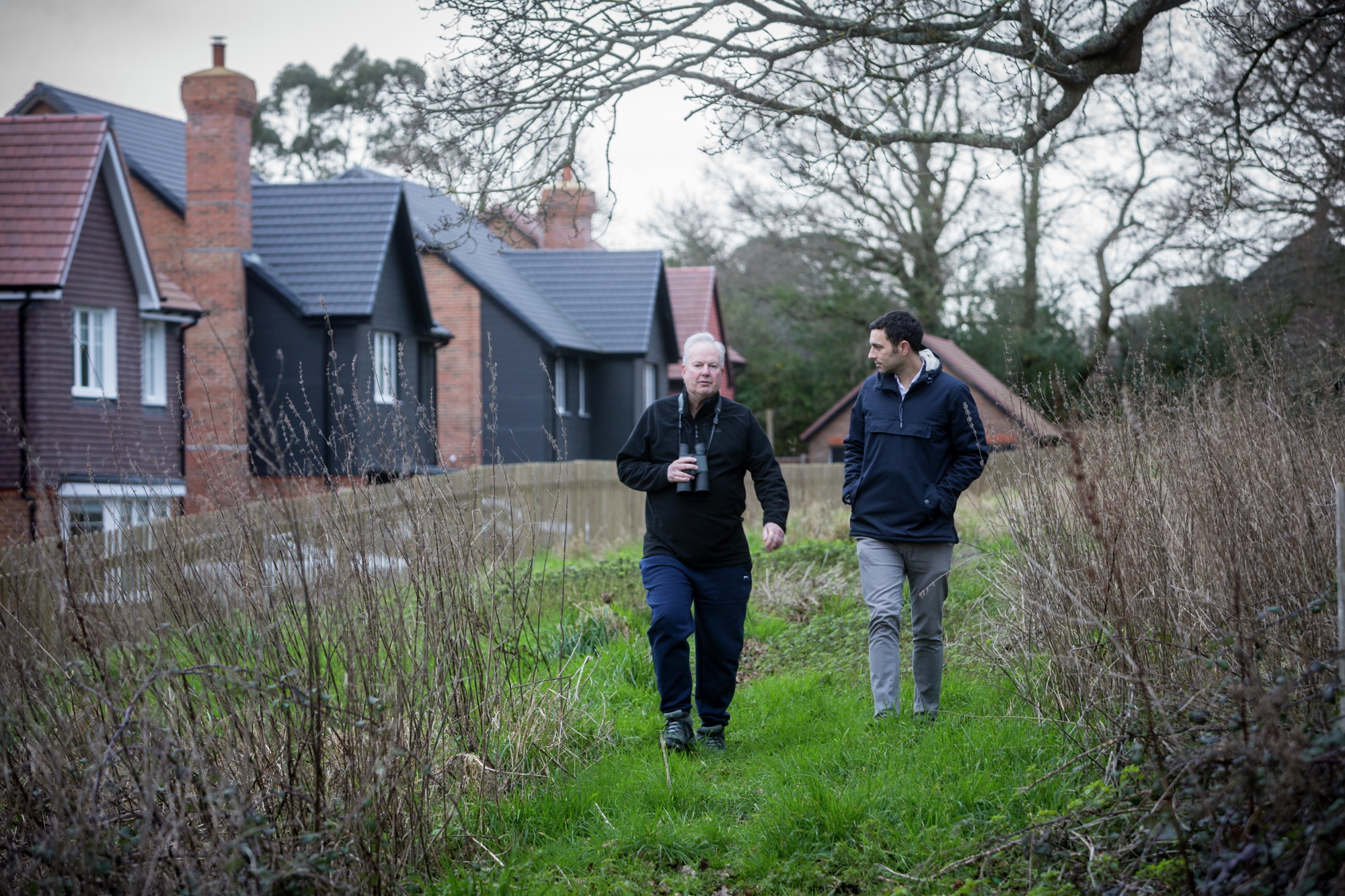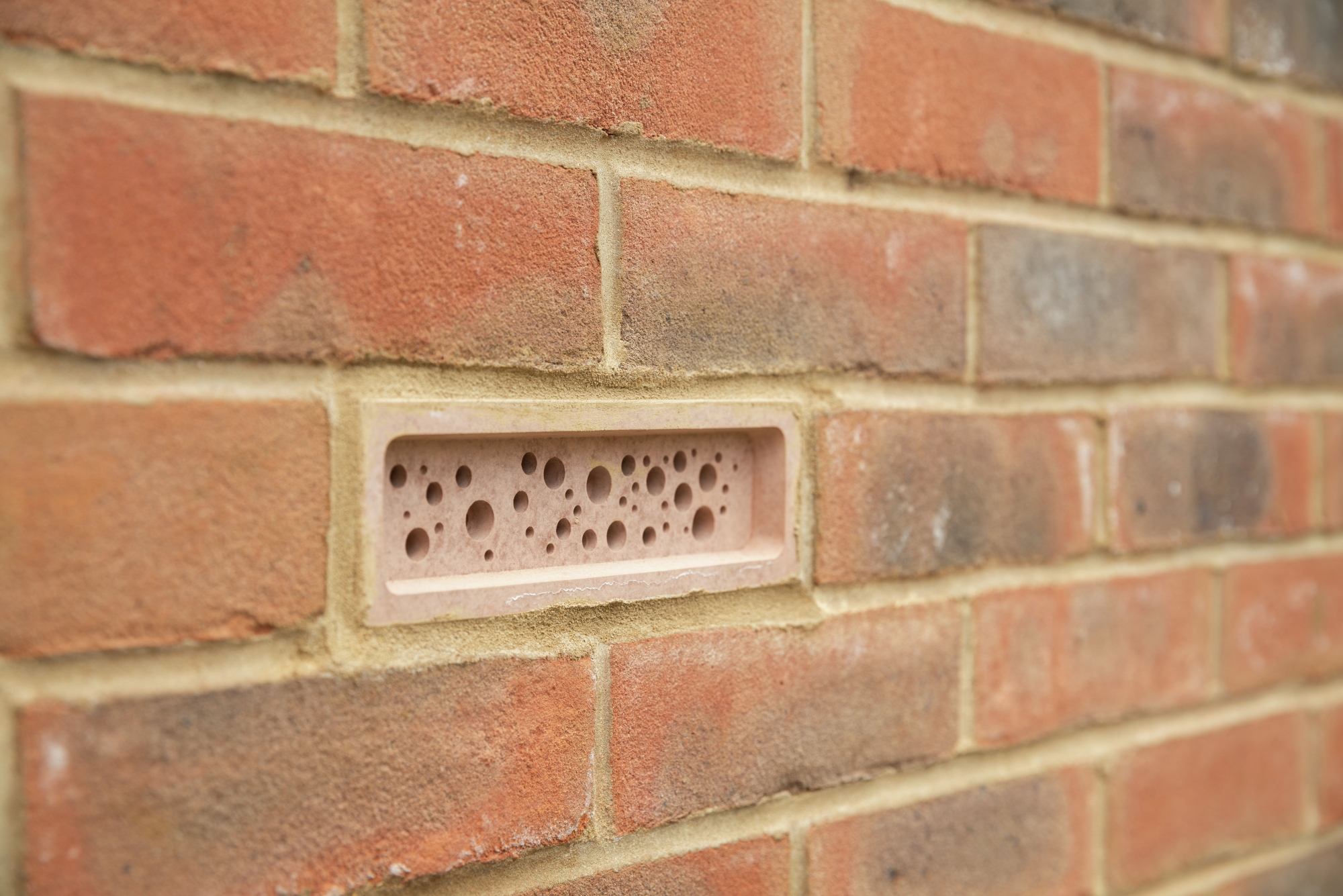Cala pledges to support wildlife across all new developments

John Richards from Cala and Keith Betton, chair of the Hampshire Ornithological Society, who helped devise the strategy
Cala Homes will include measures across all new developments to support and protect Britain’s rapidly declining wildlife.
The housebuilder’s new Urban Wildlife Strategy will introduce an estimated 15,000 wildlife-friendly measures across the UK each year to help species such as birds, bats, bees and hedgehogs to thrive within urban environments.
The framework includes bird nesting features, specialist hedgehog fencing, invertebrate bricks, bat boxes or bat roosting features and native tree planting, which will be delivered on every Cala development as standard, and regardless of planning requirements.

The Urban Wildlife Strategy was originally developed by Cala Homes Thames in 2022, who collaborated with local wildlife groups, the Hampshire Swifts and Hampshire Ornithological Society, to create a framework of habitats and nesting opportunities within the fabric of each home at Cala’s Kings Barton development in Winchester.
The Thames team has since committed to the strategy on all new developments and has introduced approximately 2,500 measures across almost 500 homes in Hampshire, Surrey and Berkshire so far.
Cala is now launching the rollout of this successful scheme across its remaining seven regional businesses covering the Home Counties and Greater London, the Cotswolds, South Midlands and Scotland.
Kathryn Dapré, head of sustainability at Cala, said: “We’re facing a wildlife emergency and we believe new homes development can play a role in supporting nature’s recovery by introducing new habitats at scale.
“These are simple, cost-effective features that we already deliver on many of our sites. The Urban Wildlife Strategy brings them together as a minimum standard for Cala, helping to gradually build back rich ecosystems in the areas we operate.
“This is in addition to the work we already do with ecologists and will be delivered regardless of planning requirements. The impact of the Urban Wildlife Strategy alone will be the introduction of approximately 15,000 wildlife measures a year, that didn’t previously exist.”

John Richards and Chris Packham filming for BBC's The One Show
John Richards, land & planning director, Cala Homes Thames, added: “Over the past 18 months the Thames region has delivered around 2,500 new wildlife measures, which have been warmly welcomed by our customers and local communities. We’re delighted to see the Urban Wildlife Strategy now roll out on a national scale at Cala.
“We must transition from environmental goal setting to taking action and this strategy seizes every opportunity to support wildlife in the fabric of the homes we build. It will give us a robust baseline for wildlife improvements on our developments, and we can only go further from there.”
The Urban Wildlife Strategy forms one of the core initiatives under Cala’s recently launched Community Pledge, and will be tracked and measured as part of Cala’s Sustainability Strategy, which includes a commitment to achieving net-zero operational greenhouse gas emissions by 2030 and ensuring that all new Cala homes are operationally net-zero enabled ahead of 2030. Cala has also set a wider target of net-zero total greenhouse gas emissions across the business by 2045.



















